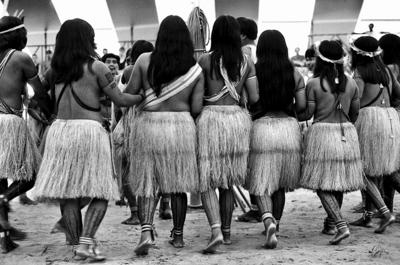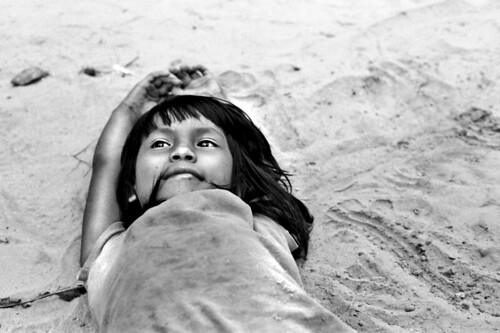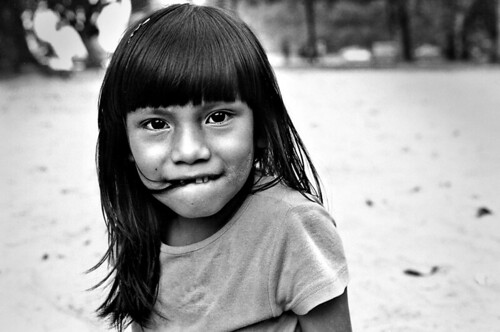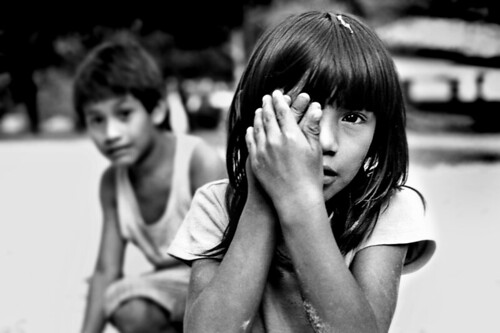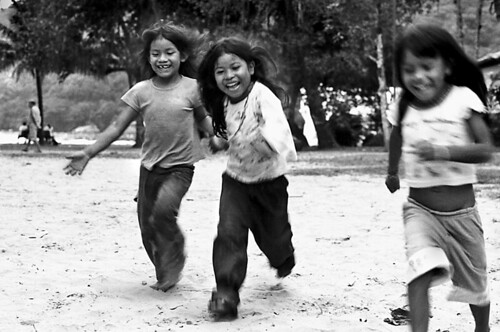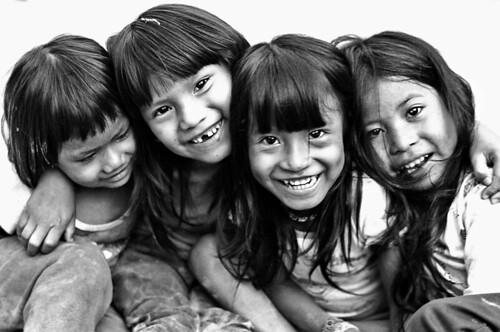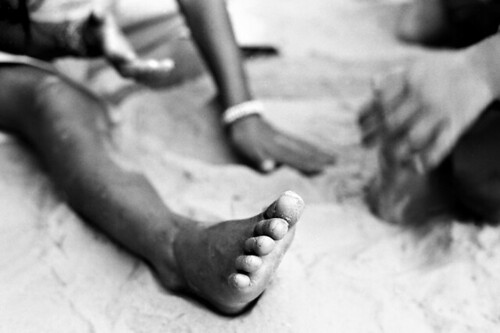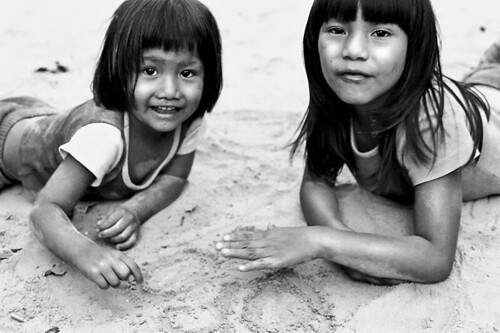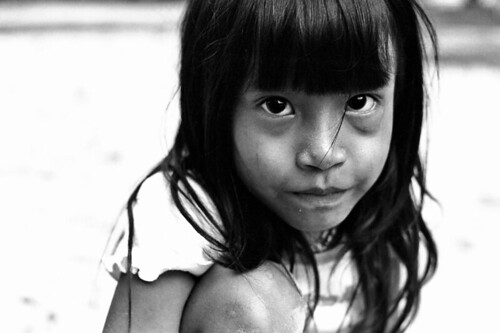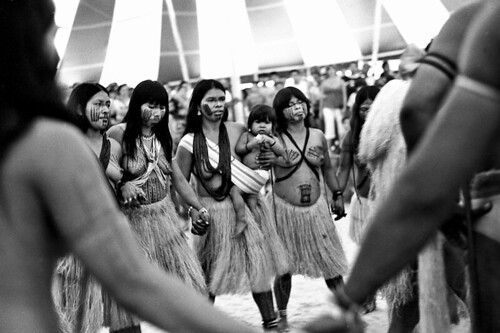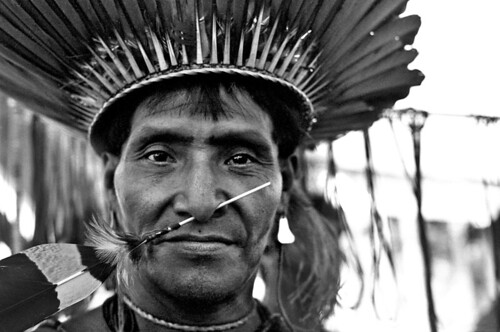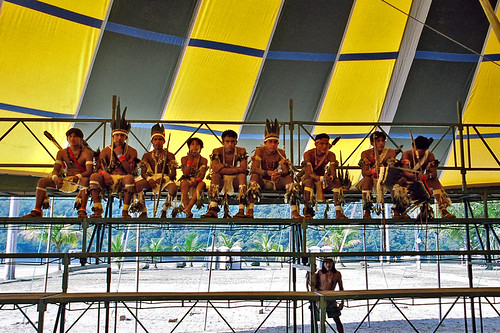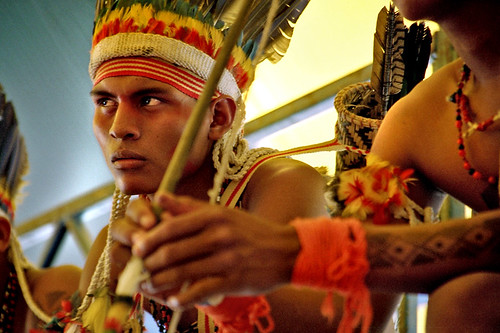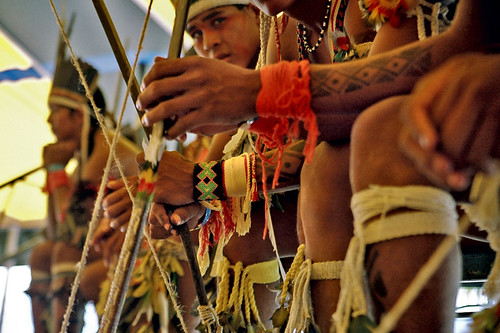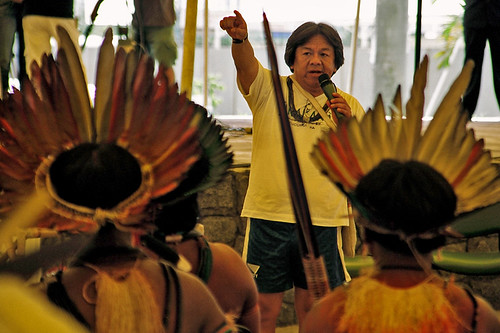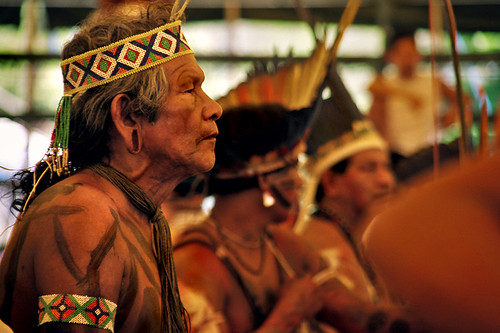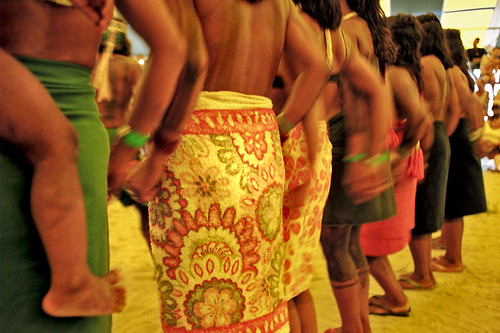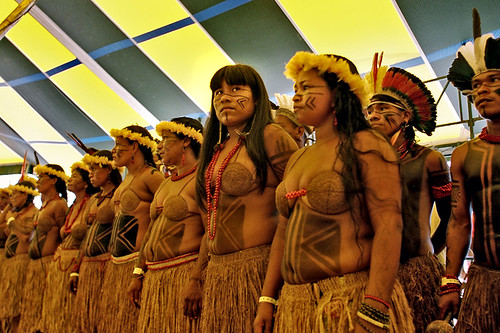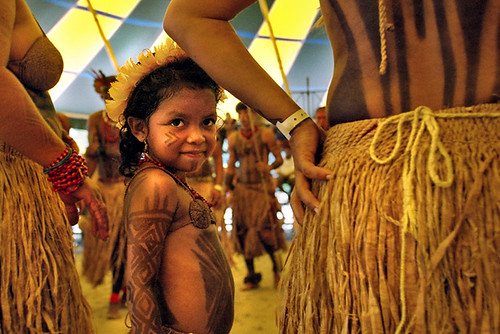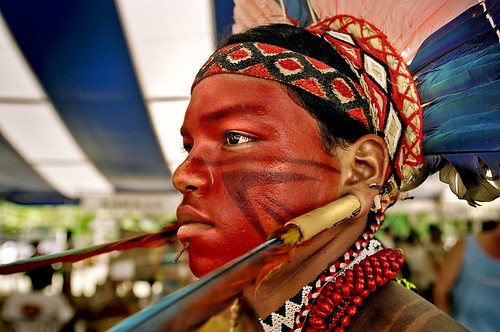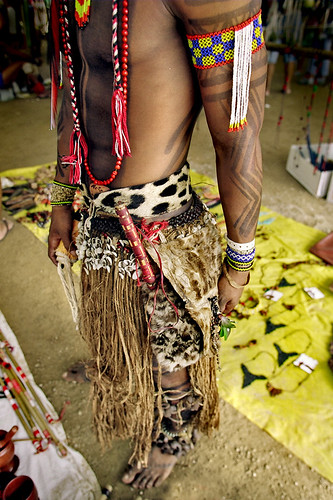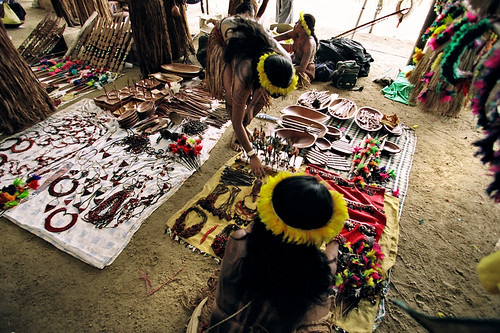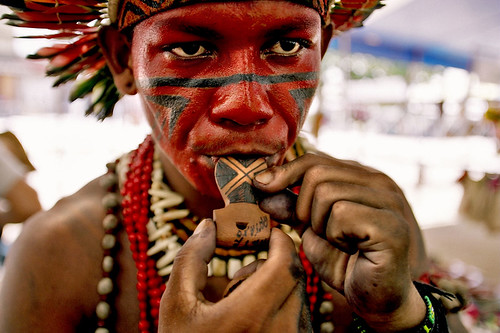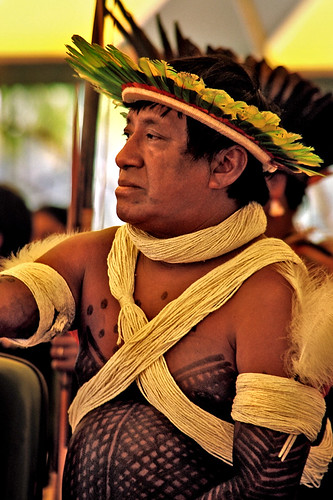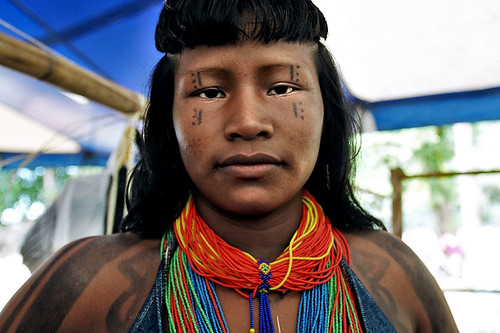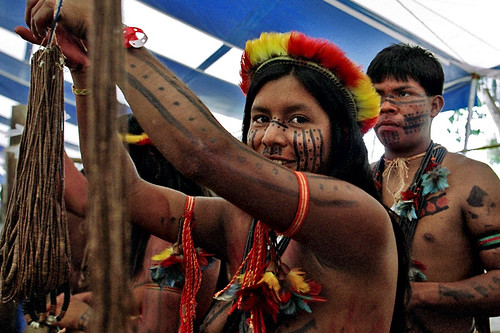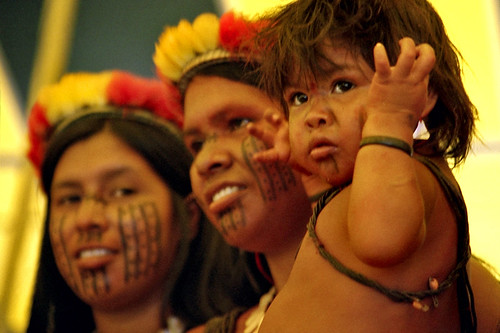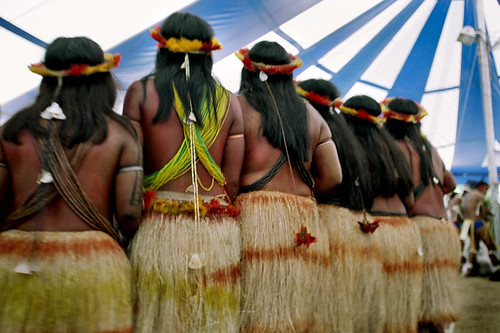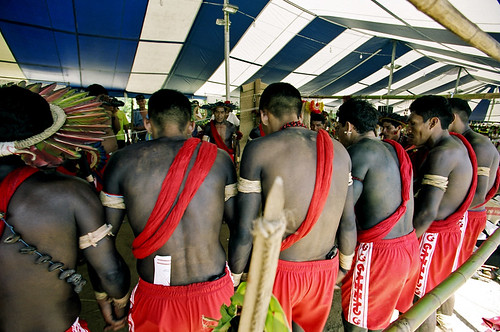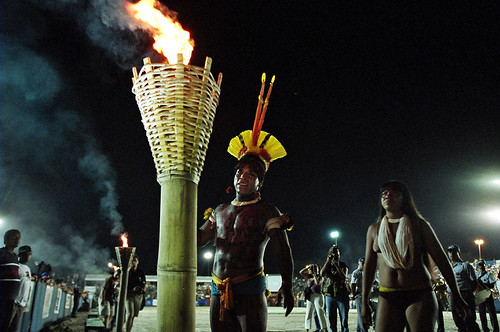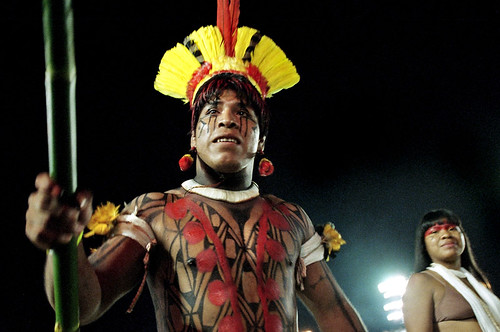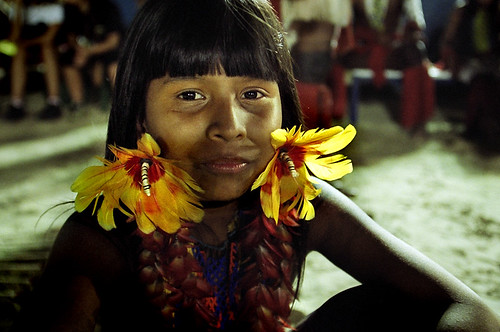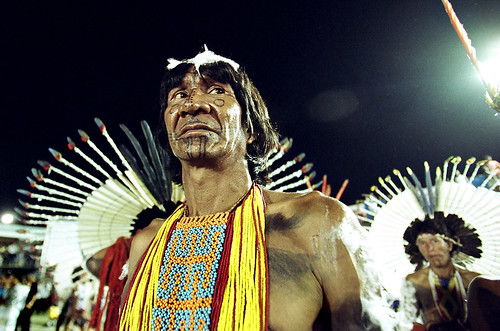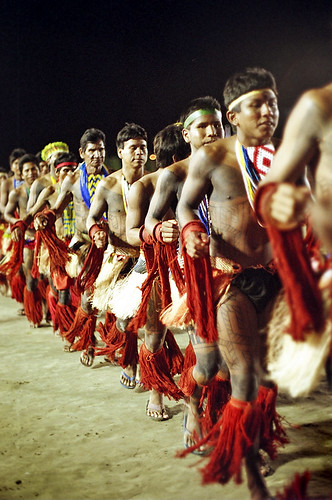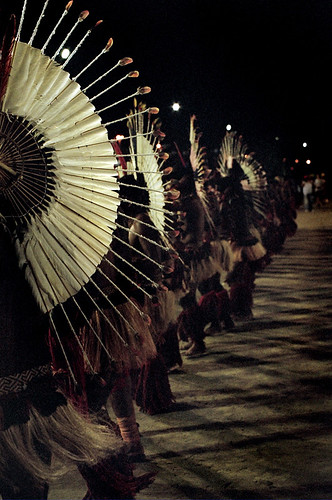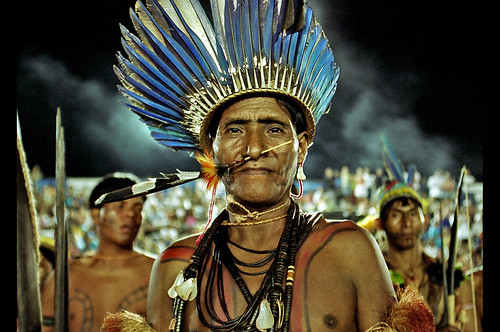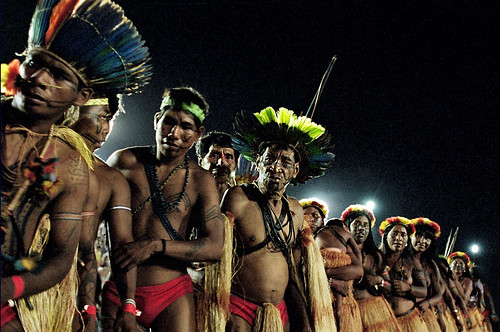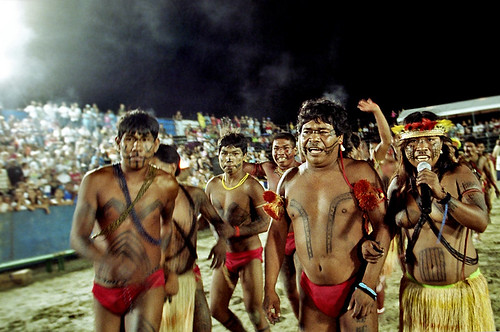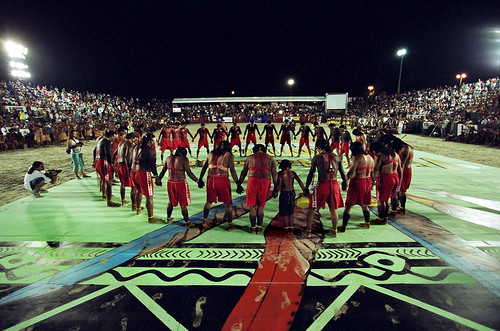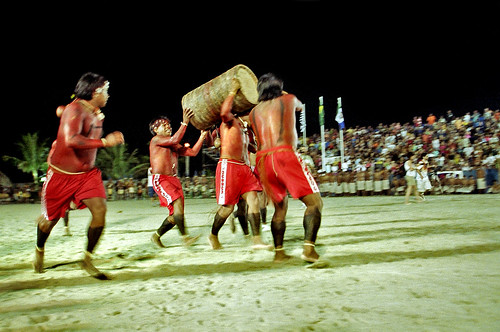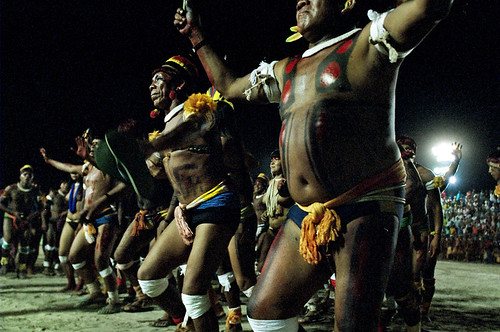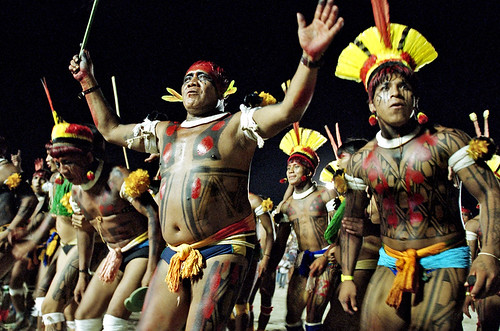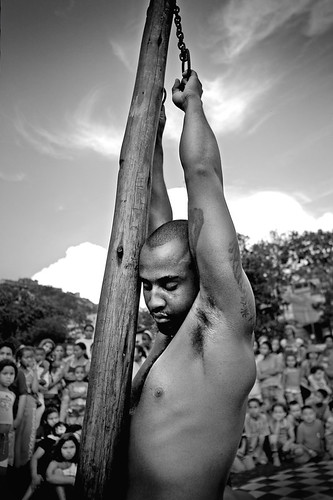
originally uploaded by Tatiana Cardeal © 2005.
Here is former street kid Poca (Jefferson), performing a moment about our Brazilian's slavery history and the Capoeria traditions, with the Humminbird Band (Banda Beija Flor). They were playing at Diadema, to the people from the Morro do Macaco's slum, in our last brazilian Children's day.
A few weeks ago we saw in many newspapers' covers Alexandra's shadow. Alexandra, 13-years old, participated in the gang who put fire to a bus full of people in Rio de Janeiro recently, commanded by the drug's traffic. Five people died, including a one-year old baby.
As another 750 thousand Brazilian children, Alexandra isn't registered, doesn't have a birth certificate or any other document, and will never have access to any social program in the country because she and all the others don't exist, officially.
Her mother died at 42, with tuberculosis, and she had never met her father. The social welfare never looked for her all this time; she had never gone to school and is therefore analphabetic. She started asking for food on the streets at 7-years old, and was adopted by the drug gangs to be used for small services.
So she changed the alms for the drug trafficker's life.
Her story truly proves how the structures that we live are failing. The family failed, society failed, the church, the community and the State failed. It's a sad repeated story from hundreds of lost children living alone in the brazilian streets. The only alternatives those children have are: choosing the drug gangs, the prostitution, or be lucky as Poca (on the picture above) and find alternatives programs.
Poca, 23-years old now, met this program called CARF (Children At Risk Foundation) in 1993. Poca's big dream whilst he lived on the streets of São Paulo for many years, was to one day become a Capoeira instructor. Thanks to CARF's efforts, he has realised that dream now and today he teaches 250 of our kids Brazilian sporting art of capoeira.
I met then just a year ago and I got involved.
You can watch some slide show sets I did there at this links:
Urban Outcries I
Urban Outcries II
Children's day
Capoeira's batizado
If you like to join and help this project just follow the star. It's my Christmas wish-list :)


